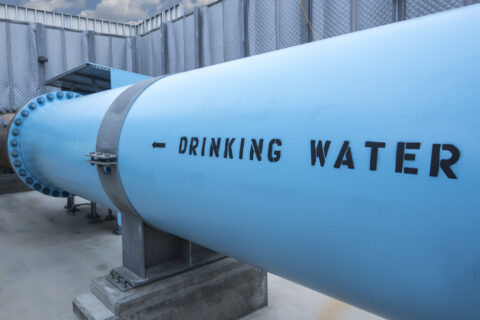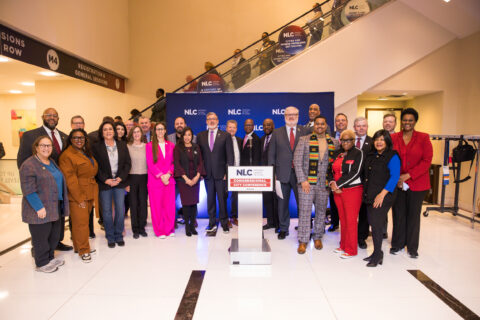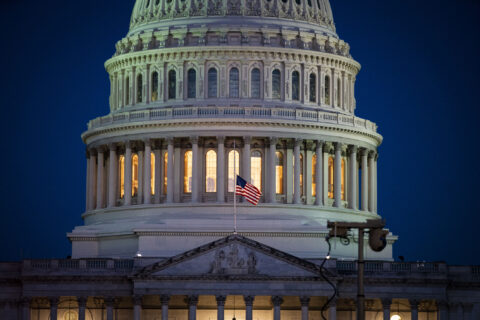In Sackett v. EPA the U.S. Supreme Court will decide the proper test for determining when wetlands are “waters of the United States” (WOTUS). The State and Local Legal Center (SLLC) amicus brief argues that municipal water infrastructure is not WOTUS.
The Clean Water Act (CWA) prohibits discharging pollutants into “navigable waters,” defined as “waters of the United States” without a permit.
CWA regulations define WOTUS to include “wetlands” that are “adjacent” to traditional navigable waters and their tributaries. In Rapanos v. United States (2006) Justice Scalia and Justice Kennedy offered competing criteria for determining when a wetland is WOTUS.
Justice Scalia, writing for four Justices, stated that “waters of the United States” extends to “relatively permanent, standing or flowing bodies of water” and to wetlands with a “continuous surface connection” to such permanent waters.
For Justice Kennedy, writing alone, if wetlands have a “significant nexus” to navigable waters they are “waters of the United States.” Kennedy’s “significant nexus” test turns on whether wetlands “either alone or in combination with similarly situated lands in the region, significantly affect the chemical, physical, and biological integrity” of navigable waters.
In this case the Sacketts purchased a “soggy residential lot” 300 feet from Idaho’s Priest Lake. To the north of their lot, with a road in between, is a wetland that drains to a tributary that feed into a creek that flows southwest of the Sacketts’ property and empties into Priest Lake.
After obtaining permits from the county, the Sacketts began backfilling the property with sand and gravel to create a stable grade. The U.S. Environmental Protection Agency (EPA) issued the Sacketts a “formal administrative compliance order” explaining they were violating the CWA and that failure to comply could result in penalties of over $40,000 per day.
Before the Ninth Circuit the Sacketts argued that the Scalia opinion controls whether their property contains wetlands. The Ninth Circuit disagreed and applied Justice Kennedy’s test.
The SLLC amicus brief, filed in support of neither party, does not advocate that the Court adopt a particular test to determine whether a wetland is WOTUS. Instead, the brief argues that municipal water infrastructure which provides water supply and treatment, flood control, and stormwater management protection is not WOTUS. More specifically, the SLLC brief asks the Court to exclude from WOTUS aqueducts and irrigation canals, terminal reservoirs, groundwater recharge and infiltration basins, and green infrastructure.
The brief points out, much of this infrastructure “is in close proximity to waters that would qualify as traditionally navigable, and/or includes features that could be construed as meeting the definition of WOTUS” as promulgated by the federal government. The brief argues: “A commonsense reading of the CWA, one that looks at the Act as a whole, and its implications for traditional state control of water supply and flood control, recognizes the difference between the infrastructure that amici operate and those waters that were intended to be treated as WOTUS under the Act. Failure to recognize this difference leads to absurdities and an inability of the Act to achieve its stated purpose.”
This case is moving forward as EPA and the Army Corps of Engineers are undergoing a rulemaking process to clarify which waterbodies are federally regulated under the CWA. In a joint comment letter to EPA, NLC urged the agencies to make public and private stormwater control features and other municipally-owned facilities, particularly those related to drinking water, wastewater, and stormwater control features, explicitly excluded under the proposed rule, as was in both the 2015 Clean Water Rule and the 2020 Navigable Waters Protection Rule.
Roderick Walston and Andre Monette of Best, Best & Krieger, wrote the SLLC amicus brief which the following national organizations joined: National Association of Counties, National League of Cities, U.S. Conference of Mayors, International City/County Management Association, and International Municipal Lawyers Association. The Supreme Court will hear this case in its next term, which starts in October.









